Our friends know we travel for food, and we’ve had some wonderful food adventures, but the trip we made a couple of years ago was unlike any we’ve had before or since. We’d been invited by another foodie friend to go to Marion, Alabama to participate in The Biscuit Experience.
Marion, deep in the heart of Alabama, population 2,734, is a charming little town, built around a typical Southern town square, surrounded by tree-lined streets flanked with antebellum mansions. We arrived at the front door of one of those mansions, The Reverie, to learn how to make biscuits.
We stepped in and were greeted in front of a grand staircase, straight from Tara, by a tall, handsome, silver-haired man with a starched white apron around his waist. “Hello”, he said, “I’m Scott Peacock. Please feel free to explore the home while I finish a bit of preparation in the kitchen.”
When summoned, the eight of us gathered in the small but beautifully appointed kitchen, where we spent the next four hours watching Chef Scott Peacock make batches of biscuits, and experiencing so much more. As he explained about the process of making biscuit (yes, singular, not plural), he wove in beautiful stories about the region. We learned about the Black Belt, named because of the rich, fertile, black dirt of the region, and about Judson College, and about Coretta Scott King and Jean Childs Young, who were both born there. And we learned about Miss Edna Lewis. You’ll read more about her in a bit.
He worked quickly but with great confidence in making the biscuit dough.
“Biscuit can smell fear”, he said.
He used artisanal flour (“but King Arthur will do”, he said), and European butter, and “only full fat, real buttermilk”. He deftly worked the butter in the flour with his fingers. He called it counting the money.
And then came the revelation about baking powder, and my friend Tim and I looked at each other like he had just revealed how to paint the Mona Lisa!
“Never use store bought baking powder. There is actually aluminum in it to keep it from clumping. Always make your own. You will notice a difference immediately in your baked goods”
And so, my friends, I got home, threw away that canister of Clabber Girl, and I have never looked back. Here it is:
Combine two parts cream of tartar to one part baking soda.
Sift the mixture three times and store in an airtight container.
Use it within six weeks.
Well, we ate two batches of Chef Peacock’s biscuit that day - they were delicious and flaky (with zero folded lamination!).
It was one of the most interesting and fun experiences of all my food adventures. And when we completed the class and signed the roster, we were all officially named Biscuiteers!
I will acknowledge here that I had known of Chef Scott Peacock before the Biscuit Experience. I knew he had been chef to Georgia governors, and that he had been head chef at two restaurants in the Atlanta area, the latter being Watershed, a legendary place in a converted gas station, where his fried chicken developed cult status. In fact, I had had an amazing meal there once when I was on business in Atlanta. I knew that he had left the restaurant world. And I knew that he had worked with Miss Edna Lewis for several years.
Edna Lewis was a world renowned chef and author, who, in her time, broke many barriers, and redefined and elevated the American view of Southern cuisine. Her second cookbook, The Taste of Country Cooking, is legendary, and in 2017, 41 years after it was published, was #5 on Amazon’s bestseller list. She was awarded many accolades in the culinary world, which include being named Grande Dame by Les Dames d’Escoffier, and becoming the first recipient of the James Beard Living Legend Award. There are many other honors and accomplishments too numerous to mention here. Please take some time to learn about her extraordinary life.
During the time that Chef Peacock worked with Miss Lewis (as he called her), they became very close friends; in fact, she lived with him in her later years. They collaborated frequently on Southern cooking, co-founded the Society for the Revival and Preservation of Southern Food, a forerunner of the Southern Foodways Alliance, and they decided to write a cookbook together. Which brings me (finally) to the cookbook I chose for Robert.
There are so many things I love about this book. I love the way the recipes are written, each with its own conversational introduction, often a discussion of how they came to agreement on the way they separately had made the dish in the past.
“Here’s the potato salad that we like the most”; “I have always adored deviled eggs…but Miss Lewis shook things up when she introduced me to her eggs.”
I love that there are menus scattered throughout - A Seafood Supper for Fall, The Vegetable Plate of Summer, Hearty Dinner for a Cold Winter Night.
I love that there is a chapter titled: Come Evening, It’s Suppertime, which includes, among others, recipes for Turnip Greens with Cornmeal Dumplings, Salmon Croquettes, and Butter Beans with Country Ham (Yes! fresh beans! - see the last 67 Cookbooks post for my treatise on butter beans) Just reading the titles of these dishes makes me so nostalgic for being on my grandmother’s farm I can hardly stand it.
And, I especially love the quote at the beginning of the book:
“As God is my witness, I’ll never be hungry again.” - Scarlett O’Hara in Gone with the Wind
Let me just say…the recipe Robert (aka Master of the Grill, The Protein King) chose - Baked Eggplant with Peanuts (page 177) - was definitely out of his wheelhouse. In fact, although I have a few eggplant dishes in my repertoire, my husband had never even cooked with eggplant before. There he goes again, Mr. Adventure!
I have to admit, the idea of eggplant and peanuts together was an unusual one, even for me. But the recipe introduction gave the perfect explanation:
“Peanuts were an important ingredient in African cooking, and from the early days of slavery, black cooks in the South have used them creatively…”
There were no rare, difficult to find ingredients, as there sometimes are in our cookbook challenges, but the recipe did call for all-natural peanut butter, and, since we are a definite Jif family, that purchase had to be made.
The eggplant was roasted whole in the skin, with only a few pin pricks, which made peeling and chopping the vegetable really easy.
After sautéing onion in bacon fat and butter, adding the cooked eggplant, the peanut butter and a little cream pretty much got the dish ready for the oven again.
The bread crumb topping - now there was a lovely finisher! Adding chopped peanuts to the requisite herbs, breadcrumbs and butter added another layer of that Southern legume that rocked!
The recipe called for putting everything in a shallow casserole or pie plate to finish in the oven, and we had this WHOLE conversation about using a Pyrex pie plate (of which I have several) and whether or not it would handle the 425 degree over temperature. Robert found internet evidence that Pyrex is safe up to 425, but my pie plates are old, like second and third generation, and I wasn’t convinced. In the end, we used a Le Creuset shallow casserole, and it worked beautifully.
(Any thoughts out there about your glass Pyrex pie plates in a hotter than 400 degree oven?)
Anyway, not to provide an unbalanced meal, Robert (Protein King - see above) decided to pair this vegetable casserole with Tomahawk Pork Chops. (Eyes rolling back in head thinking how good this was!)
Listen, do find this cookbook and buy it, not just for the lovely Baked Eggplant, which was delicious, but because, it truly is a Gift of Southern Cooking, in every way.
And, if you can, reserve a time and make a trip to Marion for your own Biscuit Experience. I guarantee it will be unforgettable!
Until next time, cook up something!

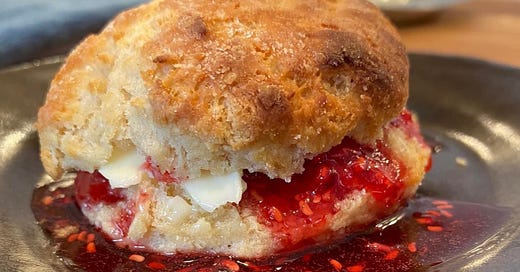




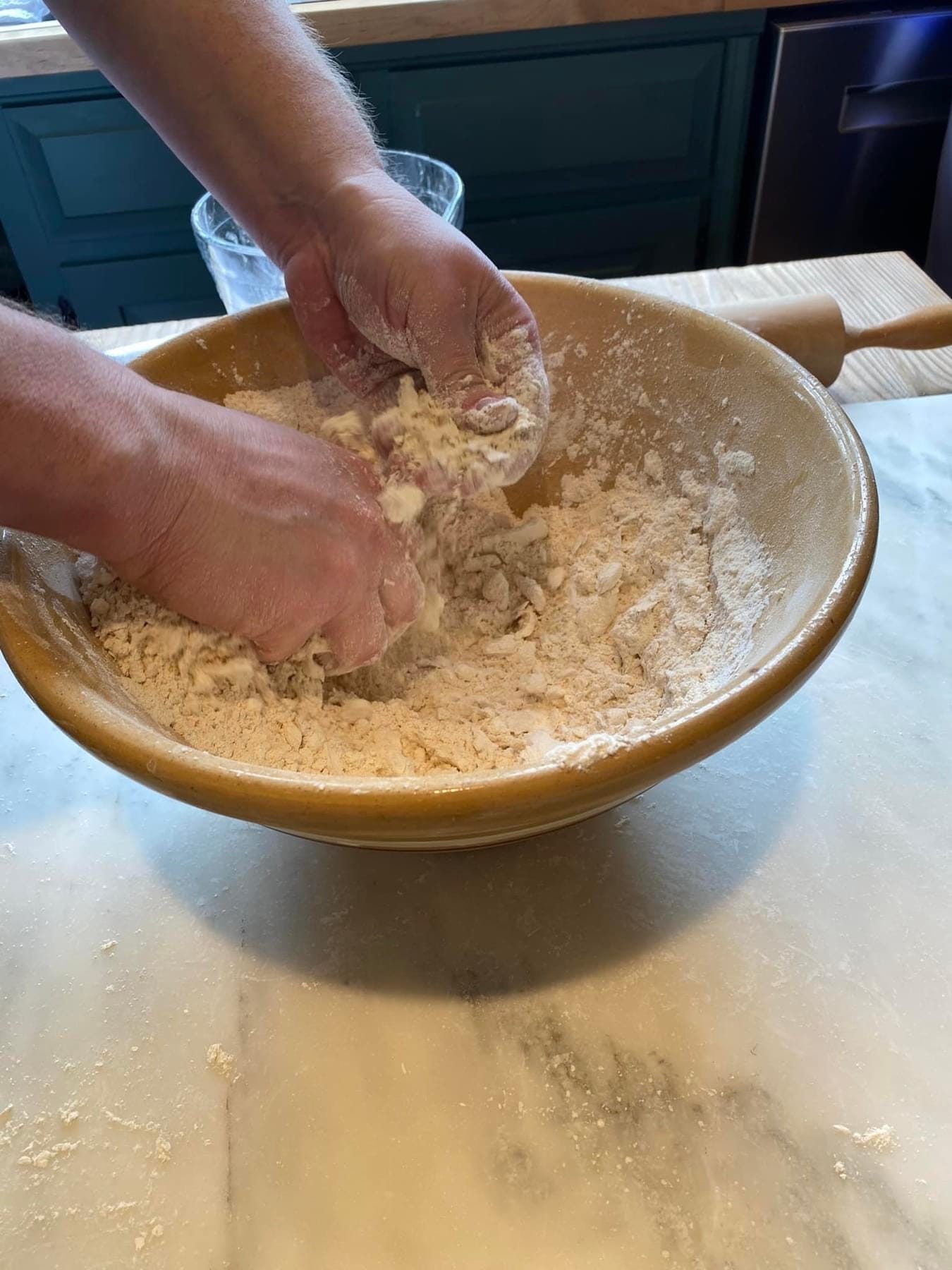
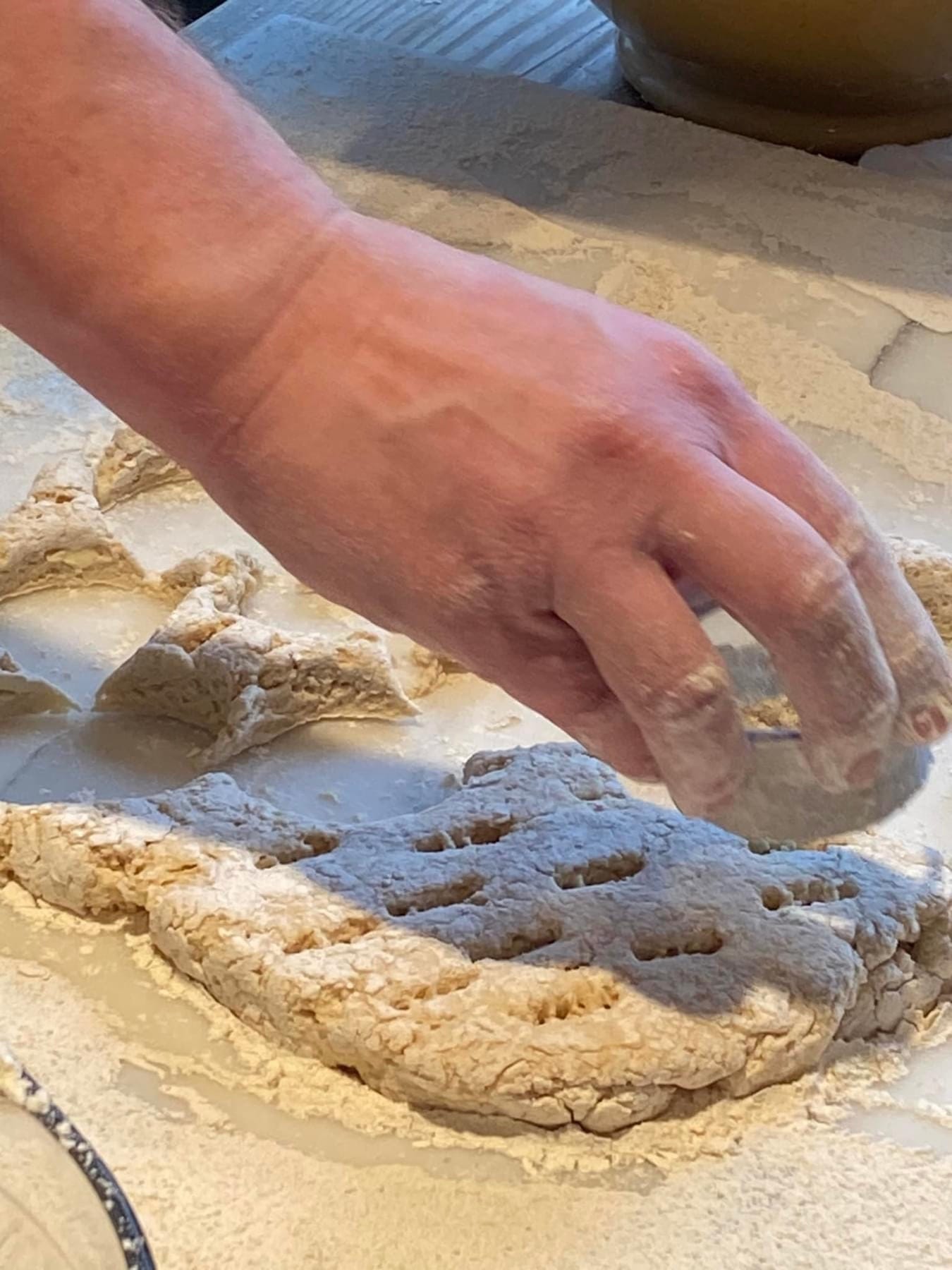
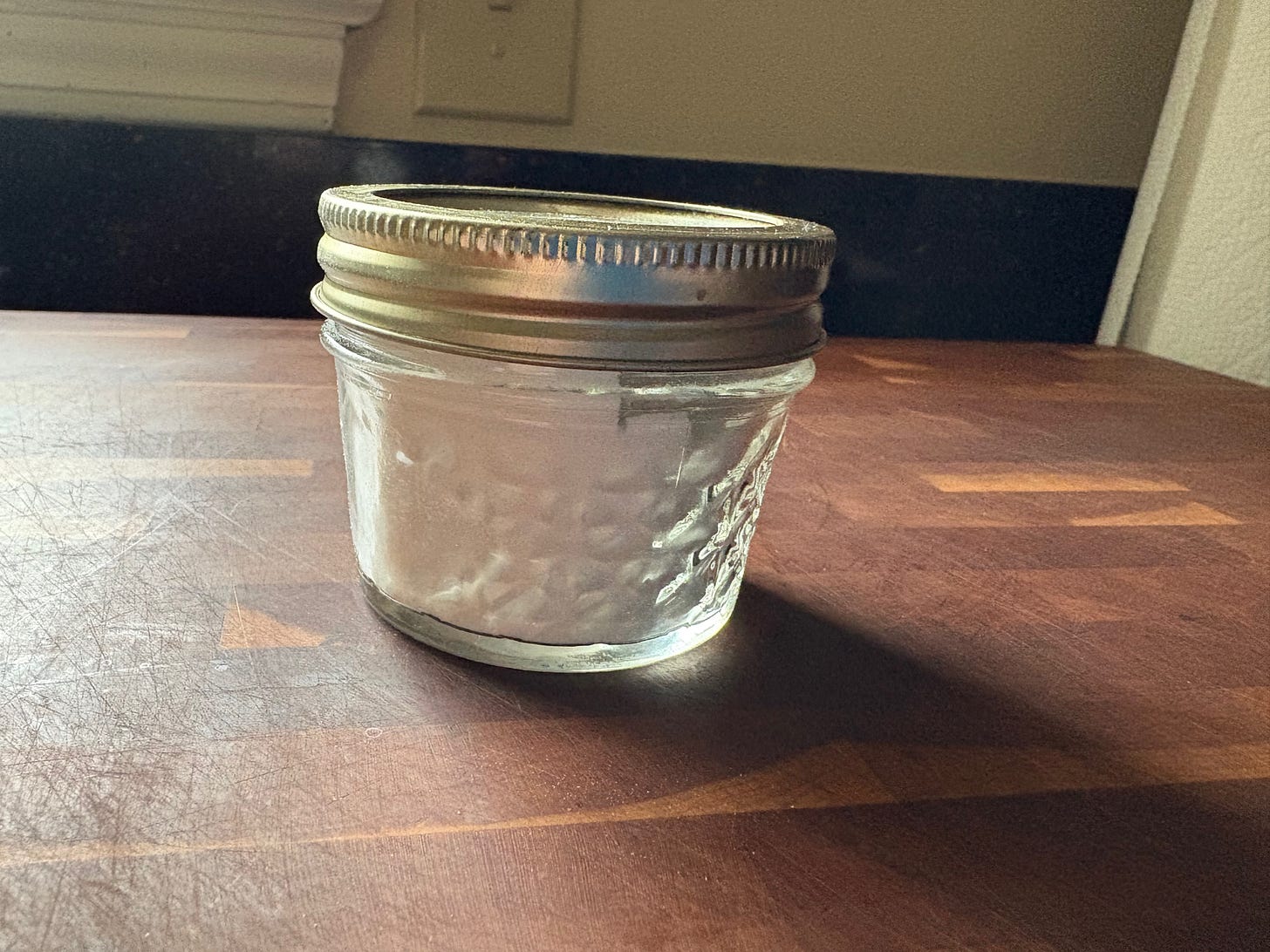







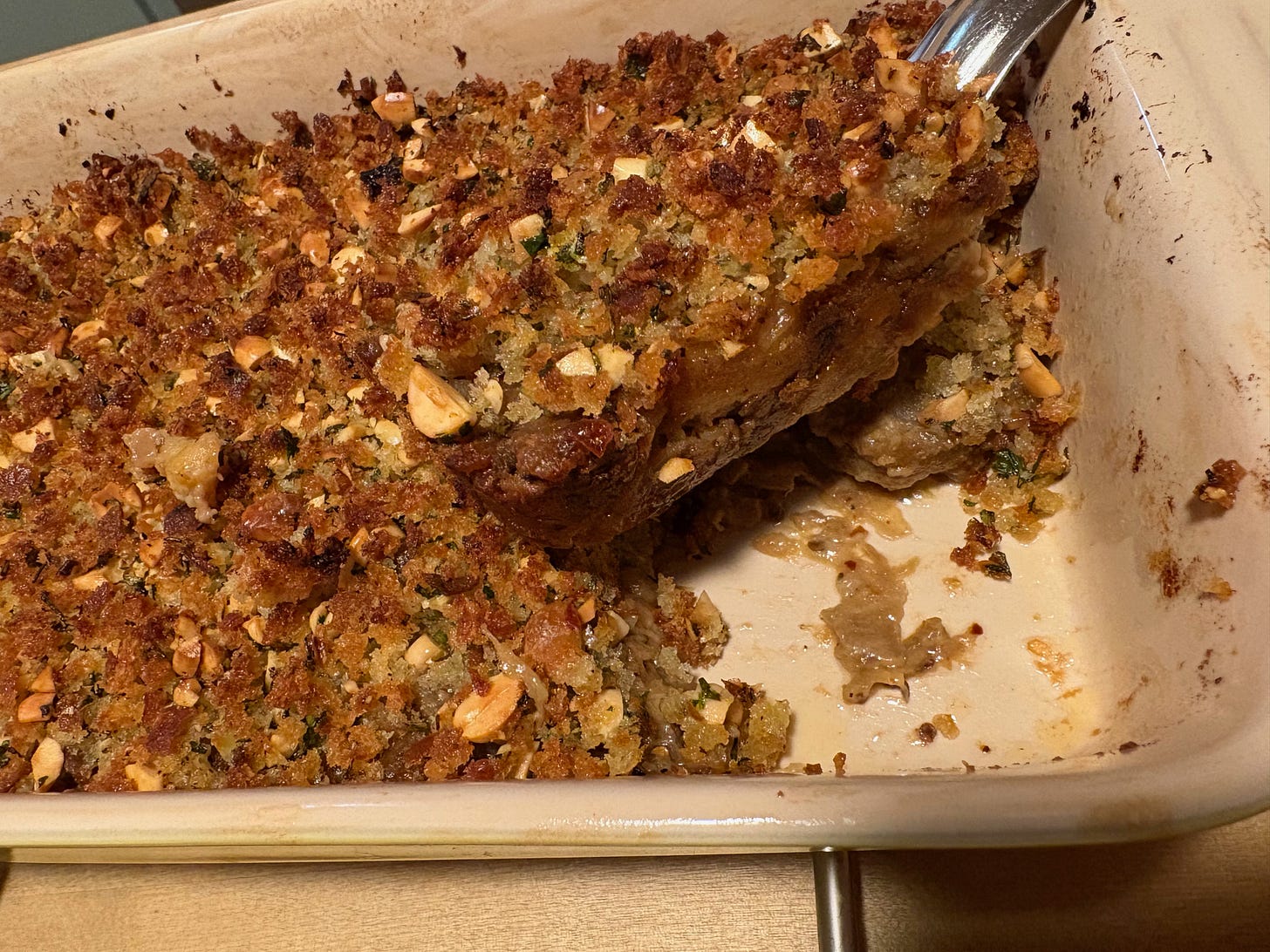
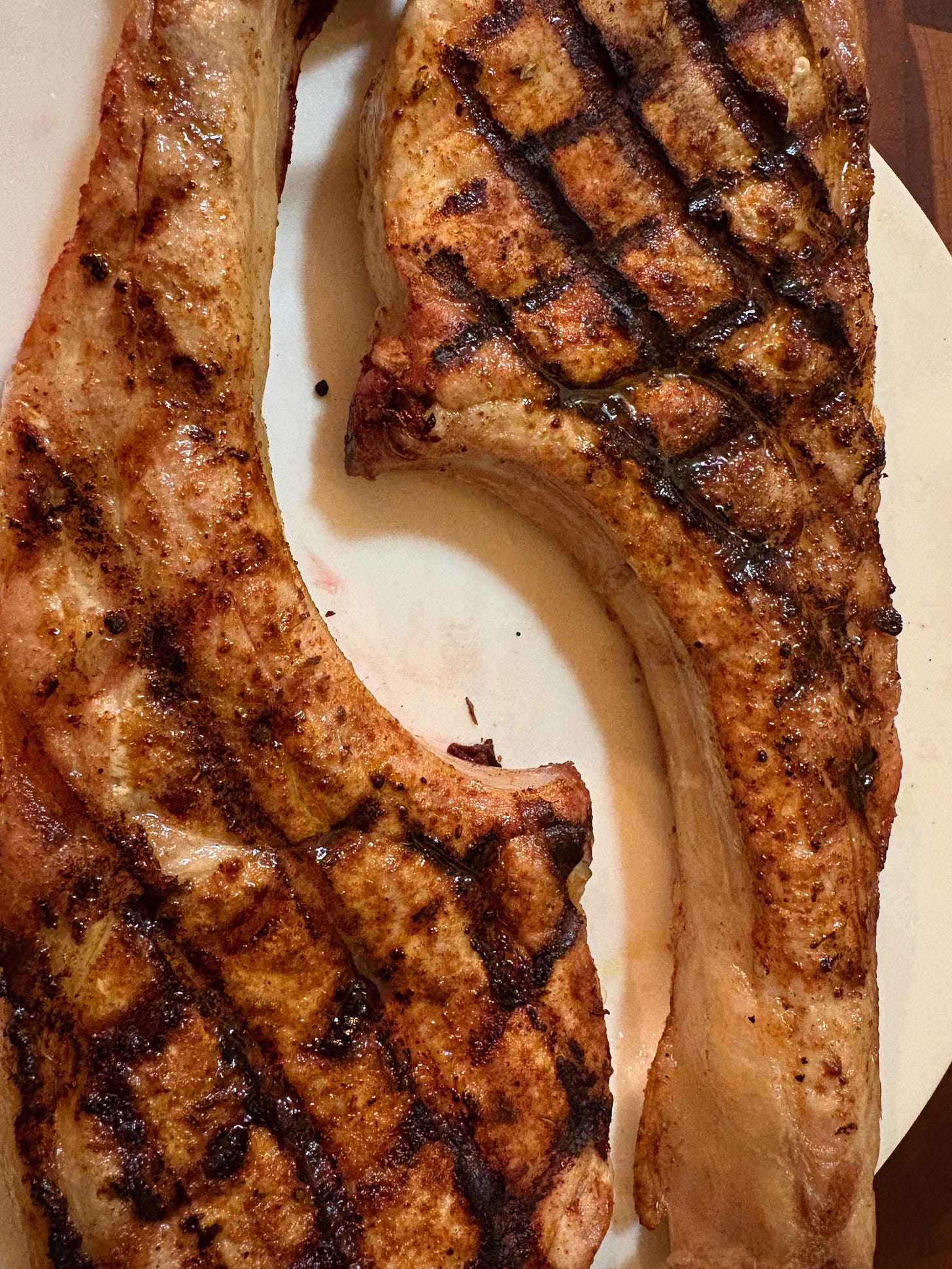
I’ve made those biscuits and they are sublime!